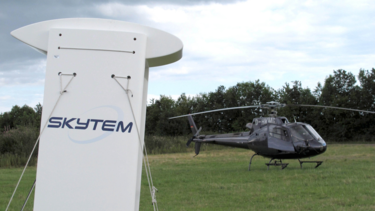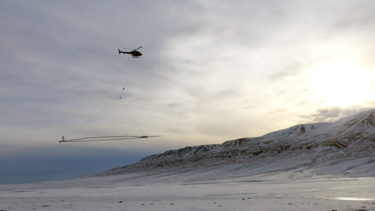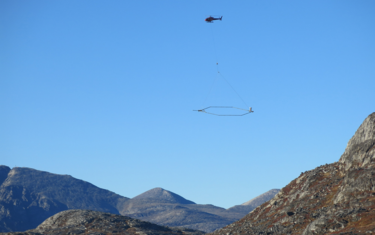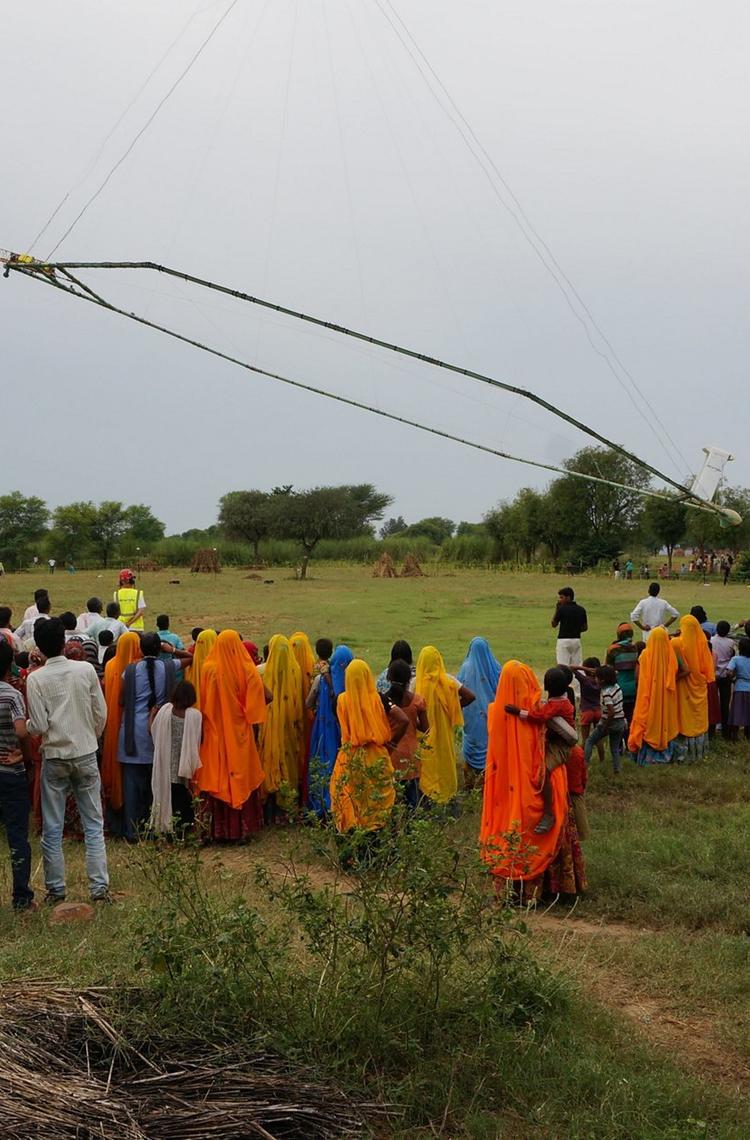30% of drinking water (fresh non-salty water) remains under the ground, while 68% is in a frozen state and only 2% is available as surface water. As our available fresh water becomes increasingly scarce and valuable, many are calling groundwater the new oil. Helicopters can help to find it.
Mapping and protecting water underground is a challenging task. Invisible from the surface, groundwater has been historically mapped through drilling information. However, boreholes are costly, time consuming, and sometimes just impossible due to difficult locations. Moreover, the information provided is often too limited. On the other hand, ground-based imaging methods can produce highly accurate three dimensional data sets, but are slow and difficult to employ in hilly terrain or populated areas.
The good news is that, thanks to advancements in airborne geophysical systems, a helicopter such as Airbus’ H125 can now potentially map 300 km of groundwater in a single day.
If you can’t measure it, you can’t manage it
To manage groundwater effectively and sustainably, high-resolution subsurface data must be collected and used to monitor and manage it: careful attention must be paid with any interaction, as it takes only a few contaminants to damage it for generations.
In recent years, collective awareness of the risks of over-exploiting water has been growing. There have been hundreds of initiatives, especially from governmental water agencies and local authorities, designed to know the situation regarding underground drinking water resources, in order to guarantee their access to the public, and ultimately, to use them in a responsible way for future generations. In locations such as India, South Africa, Botswana, as well as La Reunion, New Caledonia – and even in the region of mainland France – projects have been carried out to map and analyse underground rivers using a transmitter loop suspended from a single-engine H125.

Using the same physical concepts as magnetic resonance imaging (MRI), SkyTEM works like a big 3D scanner of the ground below.
Mapping groundwater in 3D
Even if airborne geophysical methods have been used for decades in oil exploration, it has not yet been the case for drinking water. Available since about 2004, the system currently consists of a hexagon-shaped electromagnetic scanner, about twice the area of a tennis court, suspended from a helicopter flying at a height of 30 to 50 metres.
“The geophysical system from SkyTEM works like a big 3D scanner of the ground using the same physical concepts as an MRI scanner at hospitals,” explains Per Gisseloe, Project Manager at SkyTEM, which produces these antennae. “The signal we measure depends on the electrical properties in the ground. Water-saturated sand that can be a potential groundwater reservoir will give a higher signal back than dry sand, for example. The electromagnetic field transmitted by the geophysical system does not pose any risk to the public. The field strength is less than that transmitted by an electrical train.”
The studies allow detailed analysis of the composition and geology of the soil and allow the construction of models to manage groundwater. In addition, these analyses provide important information for later deciding where to drill and place wells. But without a doubt, one of their biggest advantages is the time and money saved thanks to helicopter transport, which can cover large areas quickly (up to 1,000 linear km per day in ideal conditions).
The electromagnetic field transmitted by the geophysical system does not pose any risk to the public.
- Per Gisseloe, Project Manager at SkyTEM
H125: dowser of the 21st century
To obtain good results, the system needs to be close to the ground, at an altitude of 30-50 metres, and be able to keep this distance throughout the varying terrain. The helicopter is the best-suited platform for flying along terrain in this manner, and the pilot has to be an experienced survey pilot to maintain altitude and follow the survey lines.
“We contract helicopter companies around the globe, depending on where we are flying. They provide the helicopter and pilot, while we provide the ground crew for operating the geophysical system,” explains Gisseloe, who has worked with H125s from Savannah Helicopters, Himalayan Heli Services and KMN Koopmann Helicopter GmbH in performing groundwater mapping. “The H125 has great operating capabilities for our needs and can fly with the SkyTEM system in most terrains. It is very manoeuvrable and has enough power for the purpose. At the same time, the downwash is not too bad when you have to be on the ground below the helicopter,” affirms Gisseloe.

An H125 deployed in Greenland maps groundwater using the geophysical system from SkyTEM
Mapping groundwater from the air in southern Africa
Groundwater mapping has been used in, among other countries, Botswana and South Africa to get a 3D map of the Ramotswa Aquifer, to generate new information about groundwater to facilitate its sustainable management and support water security and resilience for the two countries sharing the aquifer.
The H125 has great operating capabilities for our needs…
- Per Gisseloe, Project Manager at SkyTEM
“This is tremendously useful for us,” says International Water Management Institute’s Karen Villholth, who led the initiative. “By digitally mapping the subsurface in this way we can work out where the important aquifers are located, how large and deep they are, how they are delimited by other geologic formations. From this we can determine where it would make sense to further explore the aquifer through traditional means in order to identify good sites for drilling and managing aquifer recharge.”
Savannah Helicopters used its H125 to transport the 200-sq.metre frame antenna. The operation is extremely delicate due to the size of the antenna: “Every external load operation is unique and our pilots and crew have extensive experience and training to assess the situation and use specific techniques to accomplish the mission in the safest and most efficient manner,” explains Conrad Maree, CEO of Savannah Helicopters. “The Airbus H125 is the ideal aerial platform with superior lifting performance and reliability to deal with the hot and high conditions often experienced in the region.”

High-resolution subsurface data must be collected and used to monitor and manage groundwater.
PROTEGE project from the European Union
In the frame of the PROTEGE project, financed by the 11th European Development Fund, the government of New Caledonia and the Community of the Pacific launched a campaign in late 2020 to acquire data on water resources in Poum, New Caledonia.
The Airbus H125 is the ideal aerial platform with superior lifting performance and reliability…
- Conrad Maree, CEO of Savannah Helicopters
“The lack of data on the situation of salt infiltrations sometimes requires managers to drill for groundwater in “blind mode.” However, this can lead to saline intrusions into these resources that could be irreversible for generations to come. Better knowledge of the subsoil can allow us also to locate resources to be exploited,” explains Angèle Armando, who leads communication about the PROTEGE project.
The helicopter chosen to carry out these efforts, an H125 from Hélicocéan, flew at around 80 km/hr at an altitude of 70 metres. After three days of flights, the team managed to map 677 linear kilometres.
Sources:
- International Water Management Institute
- Report: “Mapping Groundwater with SkyTEM”
- PROTÉGÉ project
